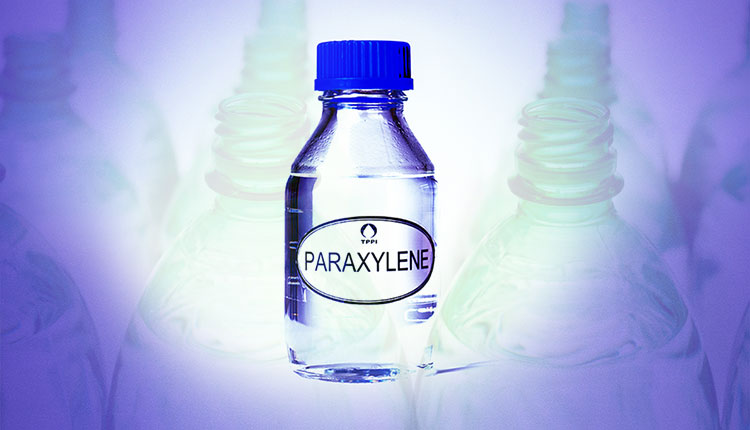Paraxylene – PX
Paraxylene is a clear liquid with a sweet smell that has irritating vapors. The density of this substance is less than water and it is insoluble in water. Paraxylene is used to make plastic bottles and polyester fibers.
Paraxylene or para-xylene or p-xylene, abbreviated as PX, is an aromatic hydrocarbon derived from benzene. Paraxylene is toxic and flammable at room temperature. This substance is naturally present in gasoline and coal.
This compound has the largest volume of xylene isomers and 98% of it is used in polyester production, especially for the production of fibers, film, and polyethylene terephthalate (PET). Currently, the paraxylene supply market is witnessing significant growth with the increase in the consumption of pure acid terephthalate (PTA).
The paraxylene market has experienced strong growth with the increase in the use of PTA in the manufacture of polyester. Demand for DMT is slowly declining as polyester producers prefer the economical PTA route, although demand for DMT is increasing in the production of engineering polymers such as polybutylene terephthalate.
In Asia, most of the growth in polyester is related to fiber, which accounts for almost two-thirds of global demand. This fabric is used to make clothes and household items such as bedspreads, curtains, and fabrics.
However, this decline has been offset by strong growth in the PET bottle resin market, which now accounts for more than 30% of global polyester demand. This growth is mainly due to the replacement of glass in soft drinks and mineral water bottles. PET has also found applications in additional markets such as sports drinks, fruit juices, and food products such as oils, sauces, and dressings.
Paraxylene applications
Paraxylene is used as a raw material for the production of other industrial chemicals, especially terephthalic acid (TPA), pure terephthalic acid (PTA), and dimethyl terephthalate (DMT). TPA, PTA, and DMT to produce polyethylene terephthalate (PET) polyesters. Bottles made of PET plastic are widely used as containers for water, soft drinks, and other beverages. Because PET is lightweight, shatter-resistant, and strong. In addition, PET helps retain gas in carbonated beverages. Because it has strong carbon dioxide-blocking properties.
Other uses of PET include:
- containers for cosmetics,
- Other cosmetics consumables,
- curtain fabrics,
- cover and clothing,
- film for x-rays,
- magnetic tape,
- Photographic film and electrical insulation,
- and packaging for welding bags,
- processed meats,
- Small films.
Paraxylene safety information
Paraxylene is mainly an industrial chemical. Therefore, the greatest opportunity for human exposure to paraxylene occurs in industrial facilities where it is used.
Because paraxylene is flammable, industrial facilities control it with safety and with methods to prevent exposure to possible ignition and ventilation of storage areas. Industrial facilities also have procedures to prevent accidental release into the environment and store paraxylene in a proper containment system in a cool, well-ventilated area.
In general, paraxylene has low acute toxicity at workplace levels. Exposure to high levels of paraxylene vapors can result in drowsiness and dizziness, and skin and eye contact may result in skin dryness, redness, and irritation. If swallowed and then coughed and inhaled into the lungs, this chemical substance can cause lung damage or chemical pneumonia.
Global PX Market
The global PX market has shown healthy growth thanks to good demand from the textile and polyester fiber industries.
According to the issue raised about the impact of PX on the environment, renewable alternatives for petroleum paraxylene have been presented.
In order to meet the growth of PTA capacity, new paraxylene plants are opening mainly in the Asia Pacific and Middle East regions.
The global PX market is expected to grow at around 5% per year.
The pictures above are PX Market by region (2019-2026)
For more information and purchase of PX, you can contact our experts at Iran petroleum.







Leave a Reply